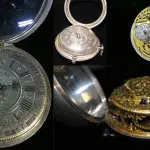
Truffles from Nuclear Fallout Are Making German Wild Boars Radioactive
Featured in Ripley's Believe It or Not!

Scientists have finally determined why wild boars in Germany are still showing signs of radioactivity, and it has to do with their diet in addition to the aftereffects of nuclear weapon testing and the Chernobyl disaster. History’s worst man-made disaster occurred in 1986, yet the level of radioactivity found in these wild boars hasn’t gone down — something experts are now attributing to truffles.




